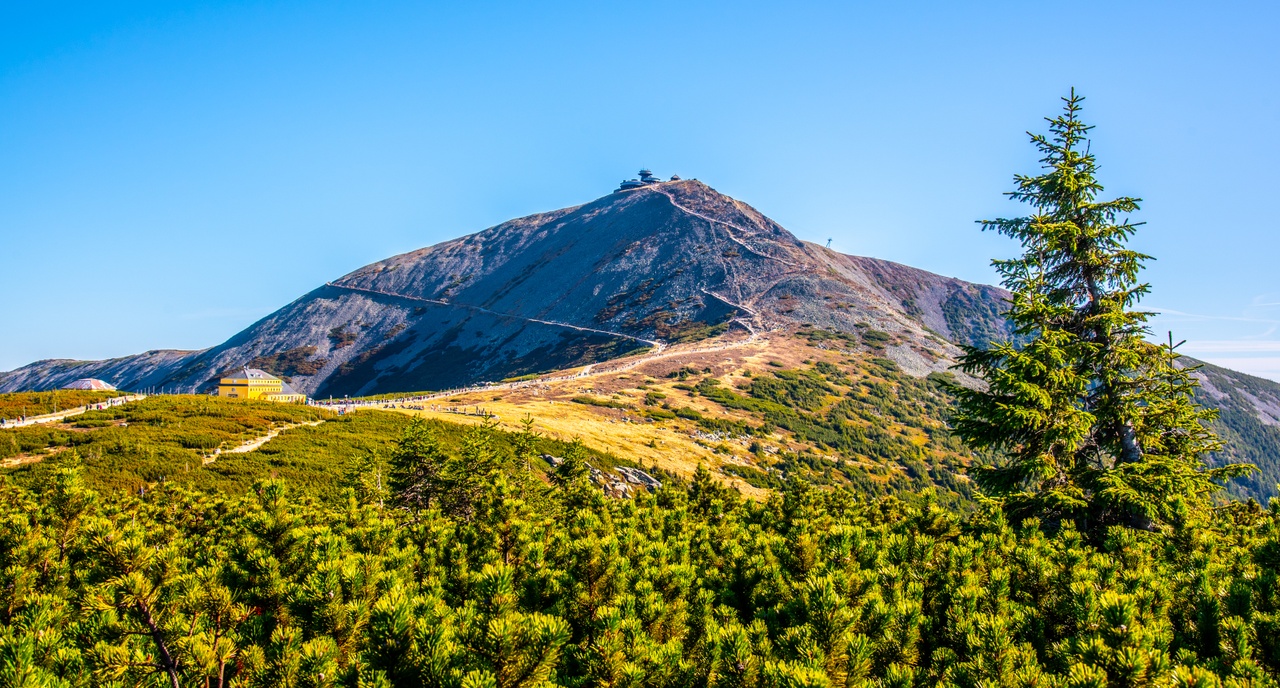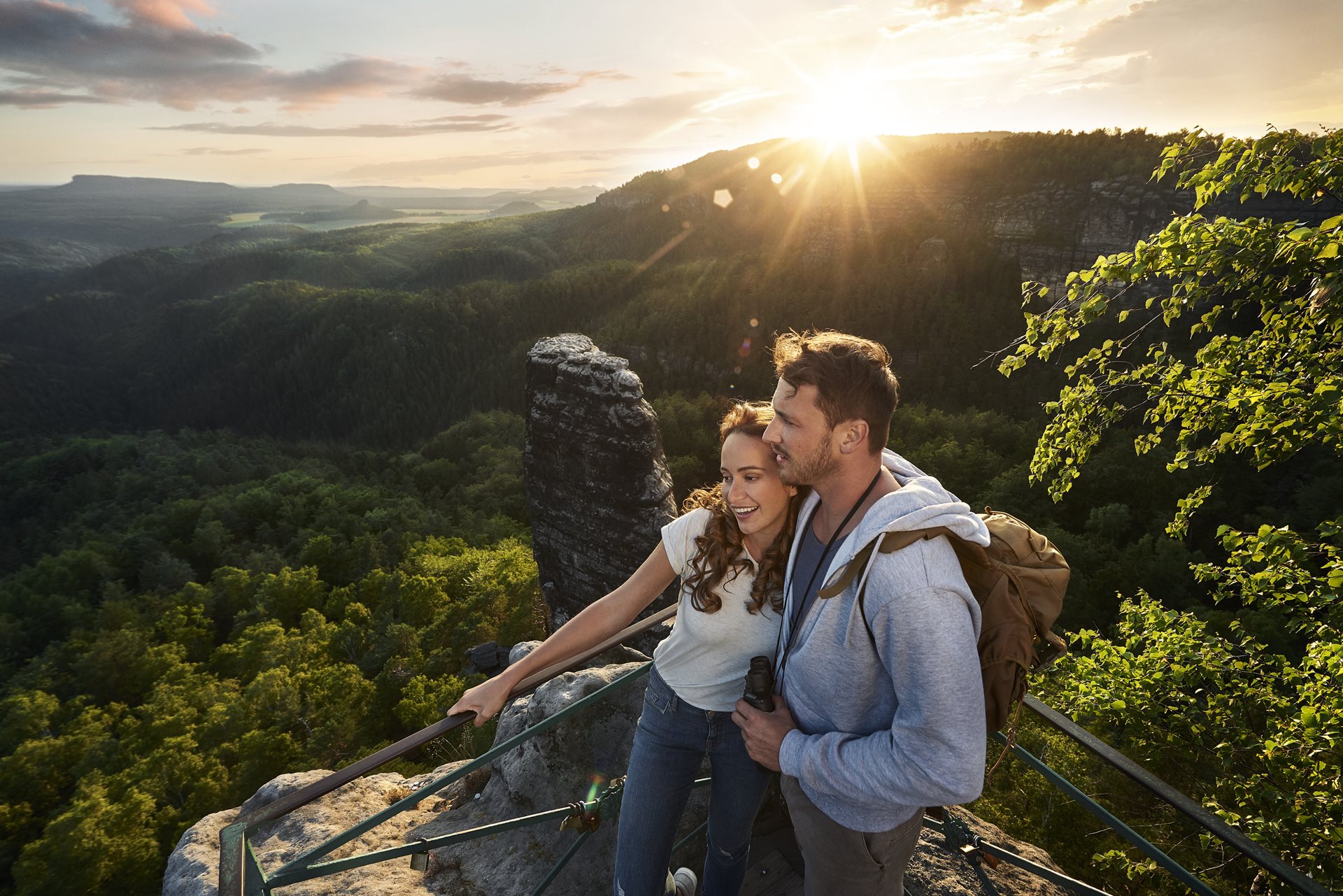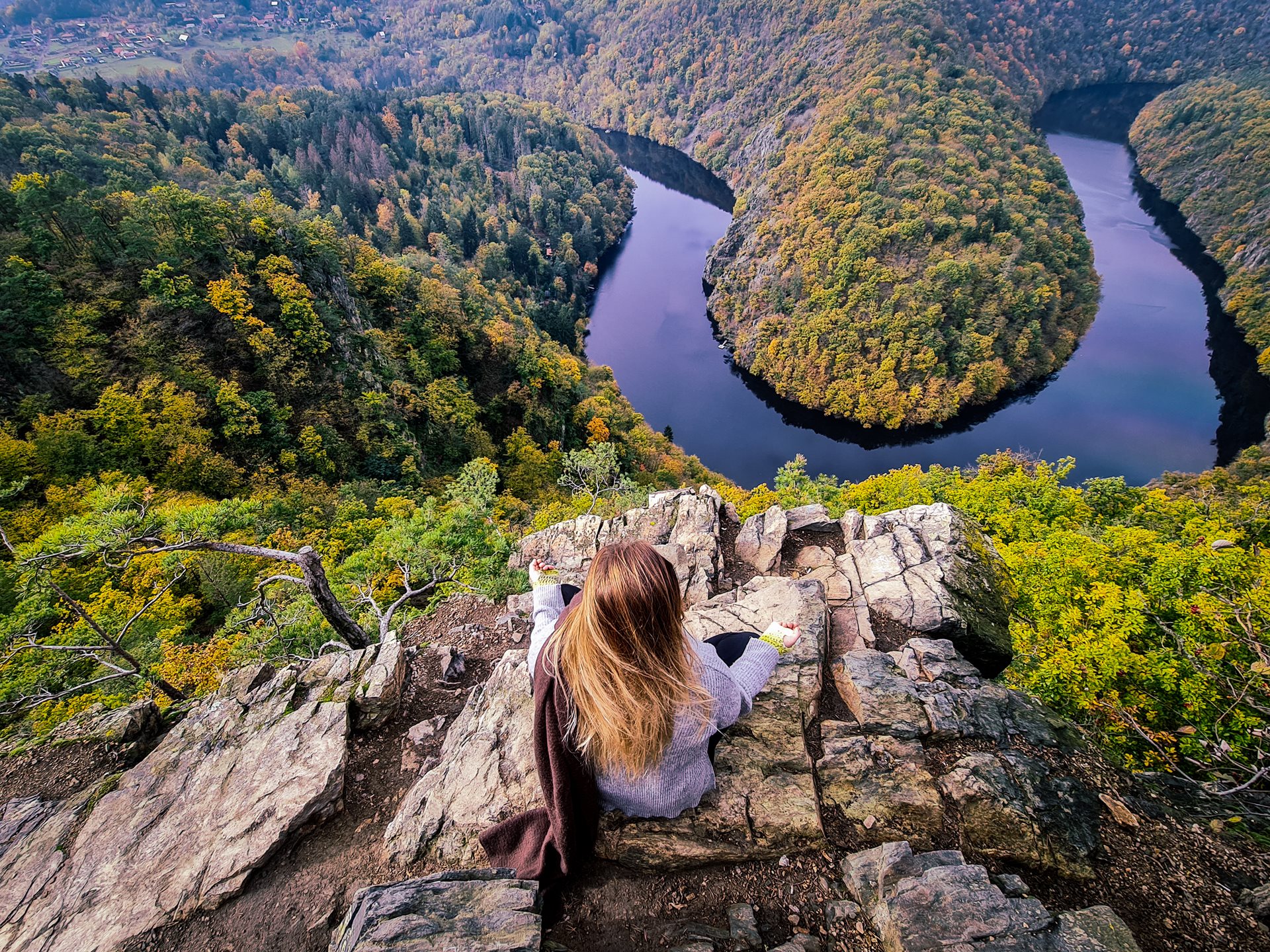We’ve picked out ten fascinating places for you, unrivalled anywhere else in Czechia - and often even in the whole world.
The highest mountain: Sněžka (1603 m)
The Queen of Czechia’s mountains can be found north of Prague on the border with Poland in the Giant Mountains. Although the weather for half the year is close to that beyond the Arctic Circle, Sněžka attracts curious tourists yearning to marvel at the panoramic views of the surrounding countryside all year round. There are various routes leading up to it – for hikers, bikers and runners. You can also take the cable car; the ride takes around 15 minutes. On the summit stands the Chapel of St. Lawrence, where Czech-Polish religious services are held every year.
The largest national park: Šumava (685.2 km2)
Located in the centre of Europe amidst dense forests, Šumava National Park is known as the green heart of Europe. The landscape there seems almost mystical in places… It is home to glacial lakes, mysterious peat bogs, floodplain forests and meadows through which winds the Vltava, Czechia’s longest river.Šumava is literally a paradise for anyone wanting to experience unspoilt nature and avoid the crowds, a place where they can quietly enjoy the colourful diversity of the local flora and fauna. One of Šumava’s most popular attractions is the Schwarzenberg Canal, which was formerly used to ship timber and connected the basins of the Vltava and Danube rivers. It is also enchanting for its sparkling glacial lakes, which you can get to along well-marked hiking trails, and the Boubín Forest.

The deepest abyss: Hranice Abyss (519.5 m)
The latest measurements show that this chasm in the Hranice Karst is actually the deepest in the world! Its submerged part is 450 metres deep, equivalent to the height of the Empire State Building in New York. Add to that the depth of the dry part and we plunge down to an impressive 519.5 m. However, according to geologists, we’re still nowhere near the end, as some estimate that the underground lake is as much as 1,000 metres deep! If this karst region near Olomouc took your breath away, we recommend a visit to some of Czechia’s other karst areas, with some stunning stalactites and stalagmites. There are several of these in Czechia..jpg)
The most massive sandstone canyon in Europe: The Elbe Canyon
The Elbe, the lowest point in the Czech Republic, flows through a fairy-tale region of sandstone rocks between Děčín and Hřensko. Europe’s most massive sandstone canyon can be admired from marked hiking trails, from the window of a train, from a boat, or from your bike as you ride the Elbe Cycle Route. It is part of the Bohemian Switzerland National Park, rightly known as the the cradle of European tourism. It was given its name by Swiss artists who used to take trips here from nearby Dresden. The countryside there reminded them of their native Switzerland.
The longest river: Vltava (433 km)
It rises in Šumava, flows through the Lipno Reservoir and the historical town of Český Krumlov and, becoming larger as it is joined by a number of tributaries, the Vltava opens out into the Elbe on the other side of Prague, in the charming town of Mělník. It is a Mecca for Czech rafters and canoeists, and below the Lipno Reservoir is navigable all year round.The Devil's Currents, some of the country’s most challenging stretches for rafters, are particularly well-known. Otherwise, however, Czechia’s longest river is mostly calm and tests helmsmens’ skills on gentle rapids that do not go above WW I difficulty rating. Sights we recommend visiting include the châteaus of Hluboká and Orlík or the majestic Zvíkov Castle.

The biggest reservoir: Lipno (48.7 km2)
Lipno Reservoir is more than 40 kilometres long and at its widest point the distance between its shores is 10 kilometres. The Czechs call it the South Bohemian Sea or the Czech Riviera. Lipno and the surrounding area are popular destinations for a summer holiday.The biggest pond in the world: Rožmberk (489 ha)
Rožmberk, not only Czechia’s biggest pond, but also the largest on the planet. Its dam is almost 2.5 km long. It was built back in the 16th century, with no heavy machinery, although it took 800 workers to create it. It took six years to complete. The pond is the symbol of the Czech tradition of pond farming and carp fishing. It lies in the charming countryside of the Třeboň region in South Bohemia, a popular tourist destination.
The hottest mineral spring Vřídlo in Karlovy Vary (73.4°C)
The heart of the Karlovy Vary spa is the Vřídlo spring. At a temperature of 73.4°C, it is the hottest spring in the Czech Republic, gushing to a height of up to 12 metres. It can also be explored from below, as the sightseeing tour through the Vřídlo underground takes you through the 19th-century technical premises of the original colonnade and offers the chance to admire sinter deposits on the passage walls, the remains of old water pipes, and the unique process by which Karlovy Vary’s stone roses are formed.The largest sandstone gate in Europe: Pravčická brána
The symbol of the Bohemian Switzerland National Park is Pravčická brána, a rock formation whose 16-metre-high arch spans almost 27 metres. It is one of the most beautiful natural formations in the whole of Czechia; in 2007 the gate was even nominated to be added to the seven modern wonders of the world. And how did Pravčická brána originate? Many millions of years ago, this area was covered by a sea. As it receded, the rock rose to the surface and erosion by the wind completed the process. This monument sandstone arch is the gateway to the Bohemian Switzerland National Park.Our tip: Try an adventurous boat cruise through the deep canyon of the Kamenice River.










